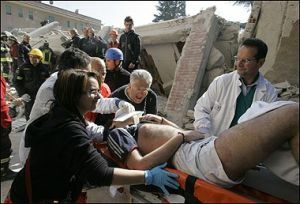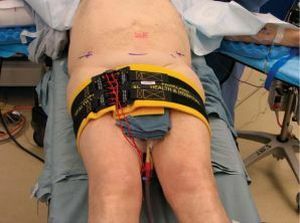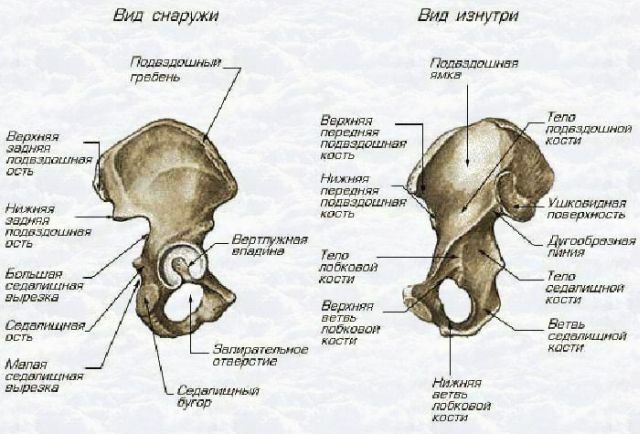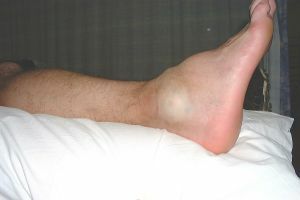 Prolonged compression syndrome is a serious pathological condition in which the crushing of limb tissues occurs.
Prolonged compression syndrome is a serious pathological condition in which the crushing of limb tissues occurs.
SDS is also called crash syndrome, traumatic toxicosis, crush syndrome.
The disease was first studied and explained by the famous scientist NI Pirogov. This is a serious and dangerous pathology, which is characterized by a peculiar clinical picture and, unfortunately, high frequent deaths.
This condition causes a prolonged compression of soft tissues. As a rule, crash-syndrome is observed in earthquakes, blockages, accidents, combat operations, destruction of buildings, etc.
Contents of the article
- How does the crash syndrome develop?
- What triggers the development of the SDS?
- Dependence of symptoms on the stage of pathology
- First aid delivery
- Therapy in a medical institution
- Complications and prognosis: a calamity is inevitable
How does the crash syndrome develop?
Specialists claim that the long-term compression syndrome begins to develop after a two-hour pressure on soft tissues.
At the beginning of compression there are changes in the tissues, blood begins to circulate badly, as the blood vessels and nerve endings are squeezed.
If compression occurs for a long time, blood circulation stops completely. The supply of oxygen decreases, which causes hypoxia. It adversely affects the work of many organs.
After 4-6 hours after compression, destructive processes are formed, leading to obstruction of the vessels of the kidneys and other organs. Also, when the crash syndrome begins strong intoxication of the body, toxic substances of the affected tissues.
Once the squeezing stops, all these substances enter the bloodstream and provoke severe poisoning. With prolonged compression of the limbs, a shock condition and complete cardiac arrest occur.
What triggers the development of the VTS?
Several main factors are associated with SDS education: 
- Severe pain syndrome .Long-lasting pain is the reason for the formation of traumatic shock.
- The large loss of plasma and blood .This condition leads to a thickening of the blood and to the thrombosis of the vessels.
- Traumatic intoxication of .This situation develops against the backdrop of absorption of products that enter the bloodstream during the breakdown of muscle tissue. This often causes arrhythmia, develops acute renal failure, in extreme cases - cardiac arrest.
Dependence of symptoms on stage of pathology
Three main stages of pathology development are distinguished according to clinical symptoms:
- The early stage of is marked by an increase in edema of the tissues and vascular insufficiency, lasting up to 3 days. The victim is noted for weakness, nausea, severe pain during movement, swelling of the extremities. In addition, the body temperature rises, there is a rapid heart rate, blood pressure jumps. The skin becomes pale, covered with a cold sweat. Sometimes, pulmonary edema is diagnosed, and a shock condition is observed.
- Toxic stage of is referred to the period of acute renal failure, continues from 3 to 12 days. There is a strong swelling of the extremities, the skin acquires a purple-blue color, is covered with blisters, and suppuration of wounds occurs. When examining the tissue is dense, the joints are immovable, when trying to cause their movement, there is a great pain, sensitivity is lost. In the period of renal failure, the amount of urine released sharply decreases, it becomes darker, has a high protein content. There is an intoxication that can cause hepatitis and endotoxic shock. In this condition, medical assistance is urgently needed.
- The stage of late complications of with long-term compression syndrome occurs about a month after the trauma. The patient feels better, pain and swelling decrease, body temperature returns to normal. But also, the symptoms of this period are muscle atrophy and the emergence of contractures, as non-viable tissues are replaced by connective and this often leads to immobility, in rare cases, suppuration is possible.
First Aid Assistance
 The first emergency aid for prolonged squeezing syndrome is that it is first necessary to empty the body, clean the mouth and nose of foreign bodies, and if necessary, do artificial respiration.
The first emergency aid for prolonged squeezing syndrome is that it is first necessary to empty the body, clean the mouth and nose of foreign bodies, and if necessary, do artificial respiration.
Then inject intramuscularly injection of promedol , and if possible, make a novocaine blockade of the limb, apply an antiseptic to the wounds.
Damaged limbs tightly bandage, immobilize and impose packets of ice or cold water.
The patient is then transported to the nearest medical center, where further treatment is carried out. Also, during evacuation, they continue to administer painkillers and sedatives in order to alleviate the condition of the patient.
It must be remembered that the life of the victim largely depends on the first medical aid.
Therapy in the medical institution
The treatment of the crash syndrome is complex, includes the anti-shock and resuscitation therapy .
First, in the treatment reduce the development of toxins, normalize the work of the cardiovascular system, improve blood circulation, restore kidney function.
In the most severe cases, anti-shock therapy is performed, and anesthesia is also important. Secondly, intensive treatment of wounds and abrasions with the help of antiseptic and dehydrating agents, in parallel apply antibacterial therapy.
Surgical intervention is required in cases when blood microcirculation is severely impaired, it is necessary to remove stagnant debris and foreign bodies in tissues, etc. 
The operation helps to regulate blood flow, remove compression of tissues, and also to places where there is exposed bone, to lay tissues. Some cases involve amputation of limbs, plastic tissues, etc.
During recovery the patient needs to undergo a rehabilitation and recovery period, which includes special exercises, physiotherapy, sanatorium treatment. In addition, victims need subsequent follow-up.
The tactics of treatment of the long-term compression syndrome largely depends on the degree of damage and the general condition of the patient.
Complications and prognosis: a calamity is inevitable.
Serious complications can develop in late treatment.
The prognosis depends on the duration of the traumatic process:
- If the crushing lasted no more than 4 hours , then 70-80% of the victims have chances of survival and partial recovery.

- When this condition lasts from 4 to 6 hours , there is a shock, but half the patients survive.
- When compressing one or both extremities of the for more than 8 hours , a prognosis unfortunately unfavorable for almost all victims, is expected to die within a few days.
In each case, the features of the course of the syndrome of prolonged compression are individual. In many respects it depends on the extent of the lesion, the characteristics of the patient, the correct treatment.
But still, you should remember that you need to be careful and avoid situations where you can cause irreparable harm to your health.



